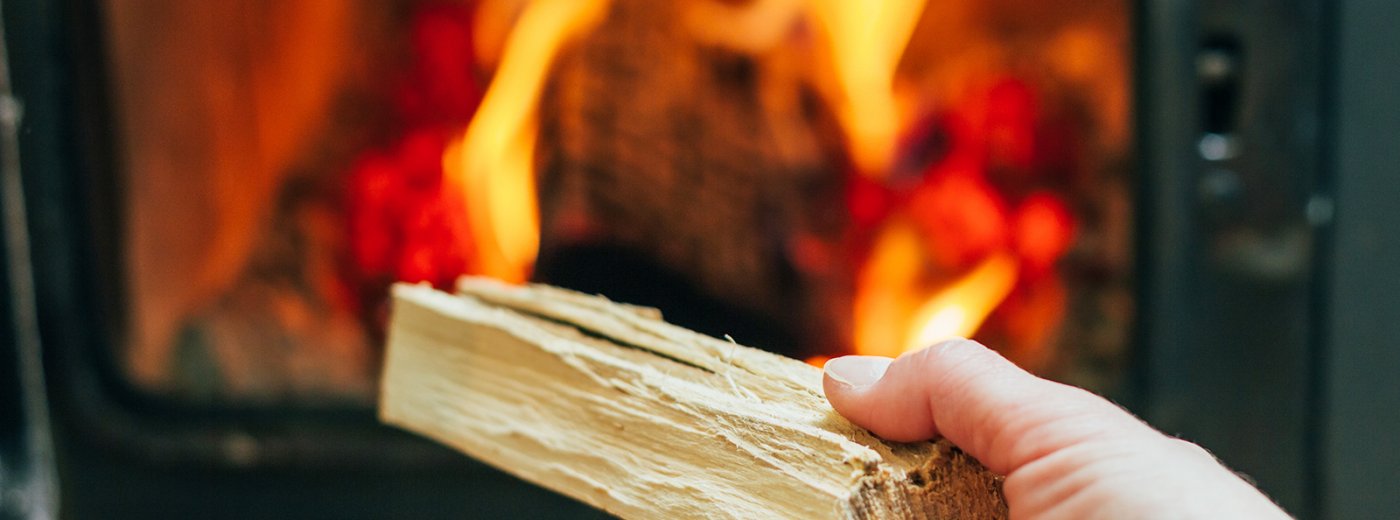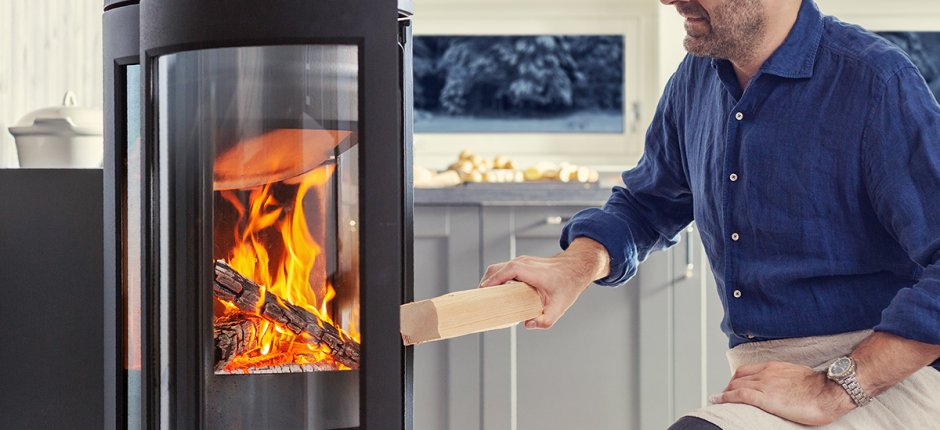The experts often talk about top down and bottom up lighting. You either start lighting from the top or from the bottom. We prefer top down. This method produces less soot and ashes, ensures better air supply and makes the first wood load last longer.
Anyway, in order to light the fire on the first try, you will need:
- A couple of larger logs of wood
- 8 to 12 pieces of kindling sticks
- Firelighters
- Matches
So lets start the fire!
- Ensure that all air vents in the fireplace are open. Put the logs on the bottom of the fireplace. It is important that the wood is cleft and dry. The logs may be as thick as a fist or thicker.
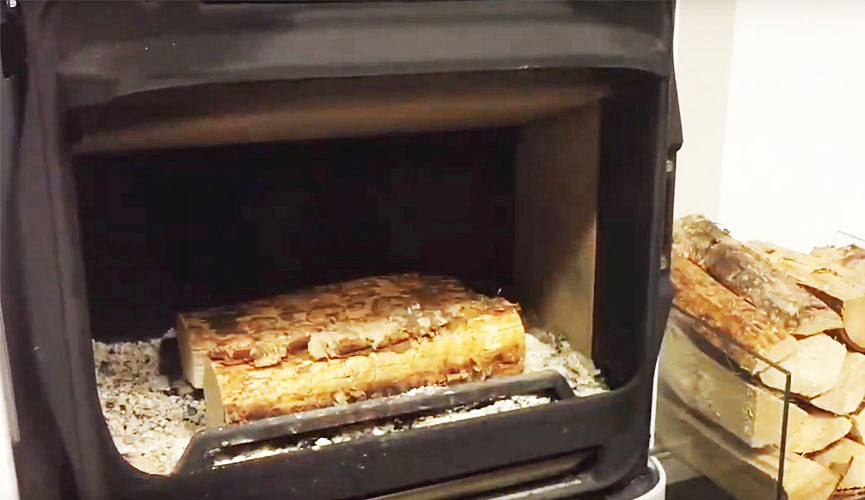
- Add a layer of small logs of about 4 cm, and then one or two layers of kindling. Remember that air is important – approx. 1 cm between the pieces of wood is the perfect spacing.
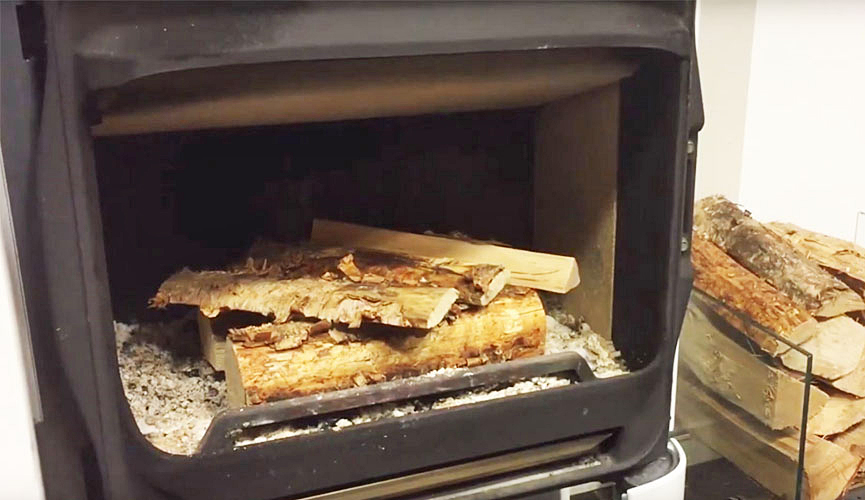
- Put a couple of firelighters on top of the layer of kindling wood. Be aware if you use newspaper, it produces unnecessary amounts of ashes and contributes to more soot.
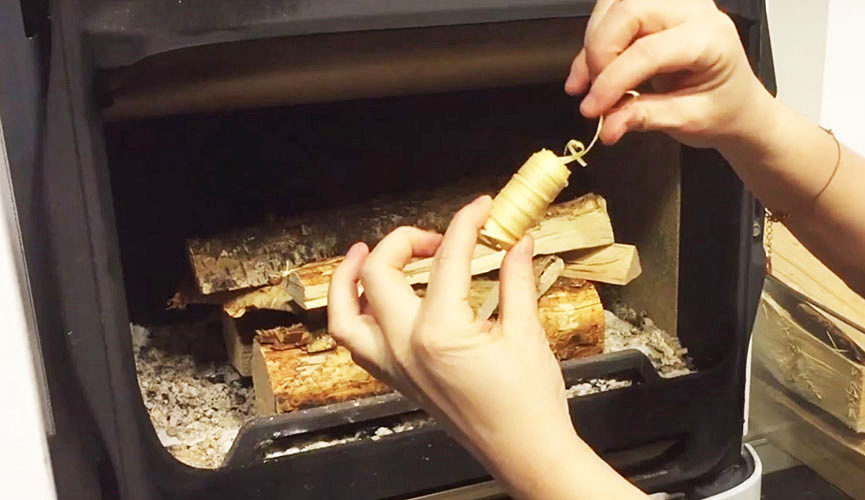
- Light it! The last step is easy, just light it and close the door! Some chimneys take more time to create good draught than others. If the draught is insufficient, it might be an idea to open the door to the wood stove slightly until it is properly burning. If the house or cabin is "too" insulated, you might want to open a window. The same applies if the kitchen ventilator is on.
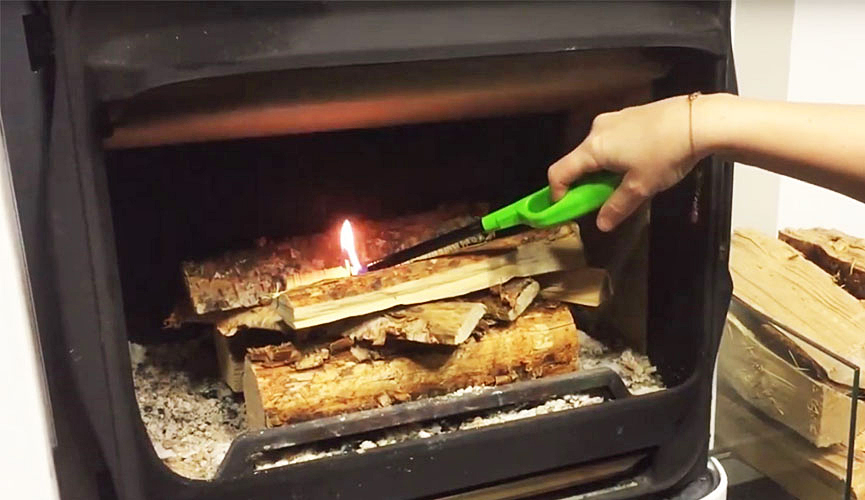
Stacking wood properly
The key ingredient in any fire is proper air movement. Where that might sound counterproductive to those new to fire building, fire needs to breathe in order to stay lit. A fire starved of oxygen will simply smolder and burn out. Stack split logs in a manner that is opposite of your kindling wood and create plenty of space between individual logs. Do not overfill the unit and start out with just a few logs - two or three at the most. Once you light the fire and these logs ignite, it will be easy to add in more for a roaring long-lasting fire.
What kind of firewood should you use in your wood stove? Take a look at the different types in our guide.
Control airflow
Today’s wood burning stoves are not merely boxes to hold heat with no way to control variable temperature. They are sophisticated pieces of equipment with valve controls that keep air regulated into the unit. The more air put into the firebox, the higher the flame will climb. When using a wood burning stove, once it is lit, keep an eye on the size of the flame in relation to heat output. For the first bit, until the flame reaches its full potential, it is best to open the valve completely for maximum oxygen saturation and to fuel a full flame. Once a regulated temperature is decided upon, merely add additional logs on the fire to maintain adequate heat and a consistent temperature for your room.
Always start fresh
A little-known tip for new wood stove owners is to start with a fresh fire each time. Where it is tempting to attempt to ignite a smoldering fire to warm the home, this should be avoided. Most homeowners think it is a good idea to crank up the heat in the morning, but it can do more harm than good. Creosote buildup should be avoided at all costs and restarting a smoldering fire will result in a lot of smoke and therefore, increased creosote.
The ideal solution is to simply start afresh each day. Allow the fire to completely burn out through the night. It will be a bit more work and may require you getting up earlier than everyone else, but this tactic will increase the life of your stove and provide you with easy maintenance throughout its life.
Wood stove - most economical way to heat any home
Starting a fire in a wood burning stove is easy once you get the hang of it. It will take practice to see which wood combination works best for your needs and which tinder option is available to you. Keep at it and before too long, you will be able to build a fire quickly without hesitation. Wood stoves are the best and most economical way to heat any home and those that have tried this form of heating, love it far more than standard electricity-based options. Enjoy your new unit and keep the family warm all season long.
Take a look at our wood stoves
